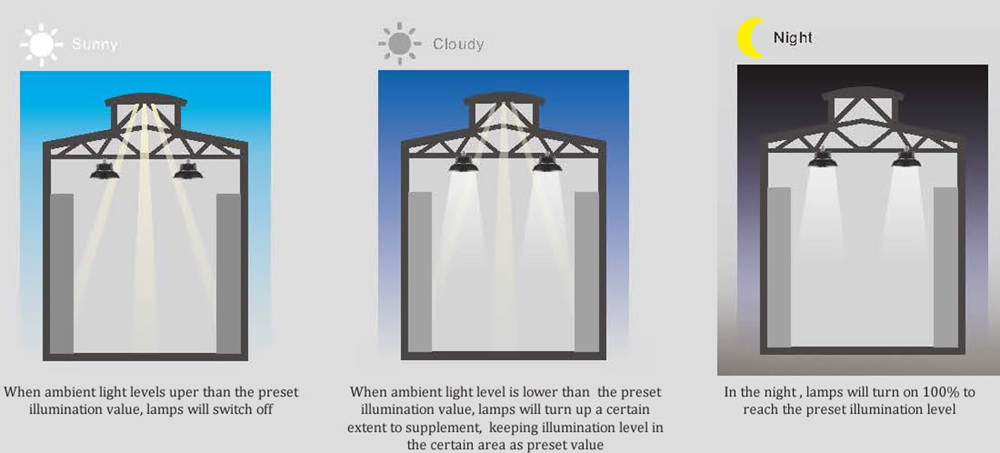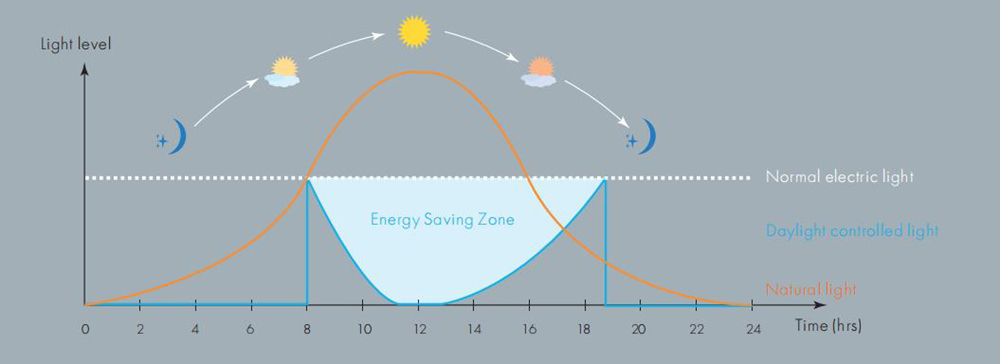As we know, the current electricity price is still ten times higher than the seasonal average for the past decade. So saving energy is imperative. Daylight sensors can maximize daylight quality, use it as efficiently as possible, and save energy without causing discomfort to the user.
What is a daylight sensor?

It is a method of saving energy costs associated with lighting. There is a built-in potentiometer so that you can set the required brightness level. The daylight sensor reads and measures the available natural daylight against the target value, calculating how much artificial light is needed. This demand is then converted to a signal and fed to the LED driver, which will then set the LED driver to the appropriate output level. When enough natural light enters the space, the lights in the space can be automatically dimmed or turned off.
Why choose a daylight sensor?

Improve efficiency
The daylight sensor could be replaced by a simple manual dimmer to adjust the illumination level when needed. This solution might be cheap but inefficient, the operator cannot judge the overall illuminance level correctly, resulting in wasted energy or insufficient lighting.
Provide comfort and convenience
Daylight sensors help maintain the proper illuminance level in a space, so there is never too dark or too bright, and the lights are automatically adjusted continuously, eliminating the need for people to manually adjust the brightness of the lights as the daylight levels change.
Save energy and electricity bill
Reducing energy consumption by adjusting natural light or turning off lights can provide up to 60% savings in lighting energy in some areas. This reduction in energy consumption can help to save on electricity bills. Even if you only save some energy each day, these add up over a year is not a small sum.
Consult with us, we will give professional suggestions to you.
Watch the video and learn more about daylight sensors:












